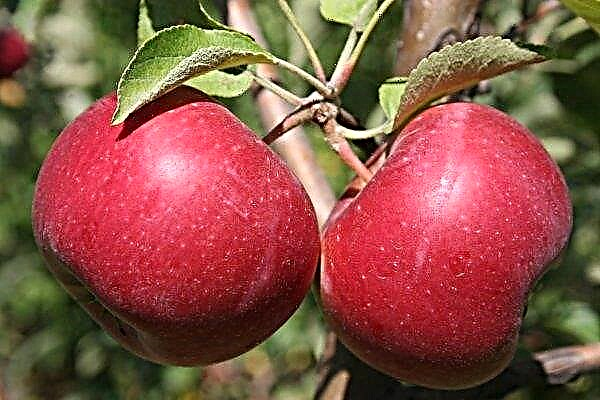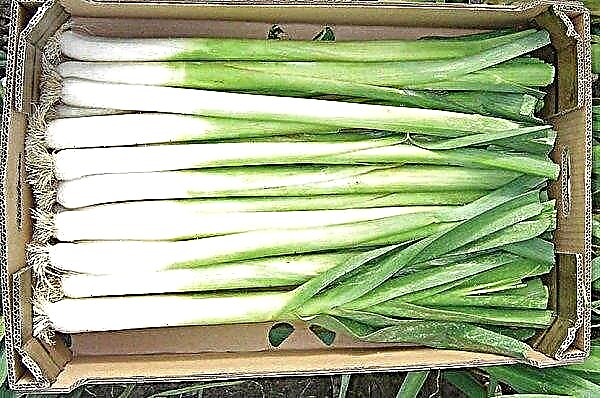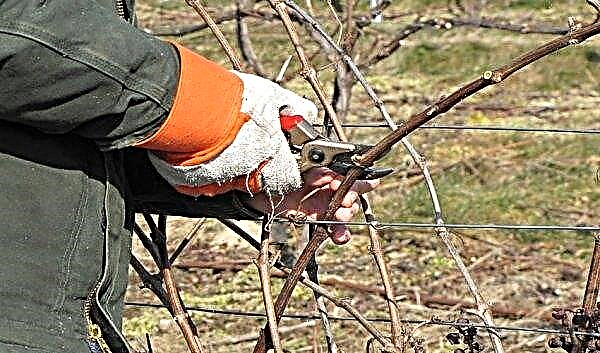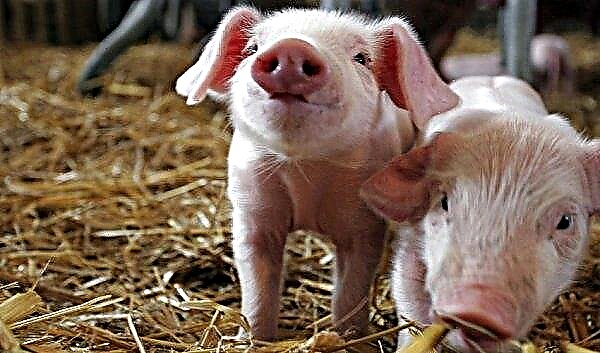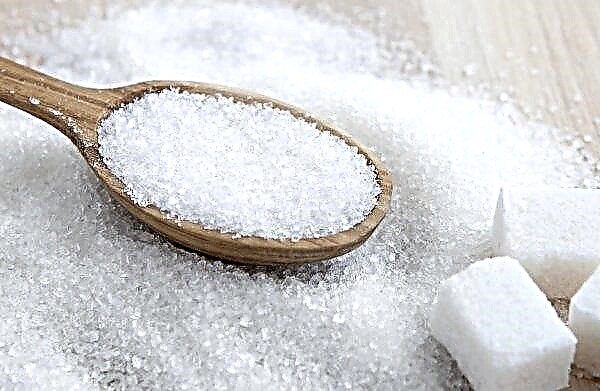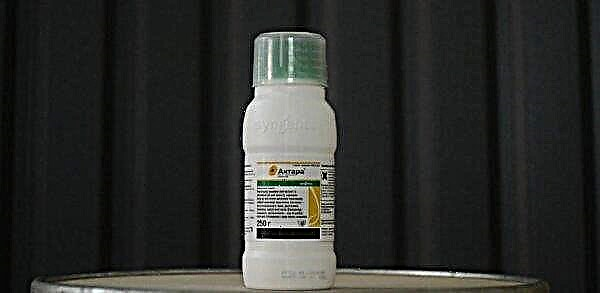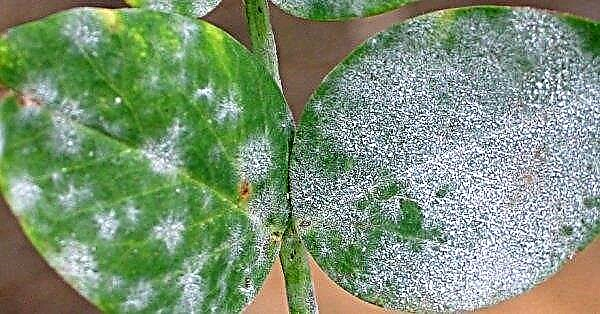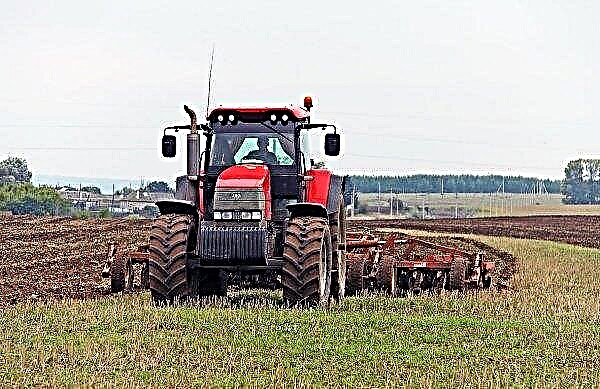Cooking asparagus is a very popular trend in many modern restaurants. This diet product is prepared in all cooking shows and workshops. To understand what this plant is useful for and how to grow it yourself in the garden or at home, this article will help.
The origin and description of the culture
Asparagus belongs to the asparagus family, which has about a hundred different species and more than 300 varieties. Asparagus is grown all over the world in dry climates.
The plant may look like:
- herbs;
- shrub;
- creeping plant.

It is worth mentioning how asparagus grows. This herbaceous plant is classified as a perennial. It can reach a height of 1.5 m. The stalk of the asparagus is erect, smooth, branched with numerous filamentary flattened branches, cladodes growing along the stem, which can reach up to 3 cm in length and are grouped in 3–6 pcs. The leaves of the plant are scaly.
In the period from May to June, asparagus can be observed blooming with inflorescences on the stem and branches, and in August you can see the appearance of fruits - berries of red-brick color, round in shape.In cooking, only the tops of sprouts with a length of 20 cm are used. The value of the product is due to the short ripening period, low yield and short shelf life. The product for eating is purchased fresh, when overripe, the buds begin to bloom on the sprouts, and the sprout itself becomes very stiff and loses its taste.
Asparagus may be:
- medicinal, the most famous species is medicinal asparagus or asparagus;
- decorative, used by flower growers for decoration;
- vegetable.
Asparagus refers to the dioecious, that is, the plant can be male and female. The main external difference is the type of flowering and the presence of berries on females. Growing in your own garden occurs, most often, using male-type seeds, open-pollinated hybrids.
It is impossible to obtain fertilized seeds from them, which can be sown in the future, however, their main advantage is high productivity and good quality of sprouts. However, not hybrid, but varietal seeds will allow you to grow asparagus vegetable forms in your garden, from which you can get seed for further cultivation.

Asparagus Properties
The properties of this vegetable crop are very valuable because it is rich in a large number of nutrients, among which it should be noted:
- routine;
- asparagine;
- coumarin;
- niacin;
- choline;
- inulin;
- purines;
- saponin;
- beta carotene;
- Vitamin A, E, K;
- ascorbic, folic and pantothenic acids;
- iron, sodium, magnesium, manganese;
- dietary fiber and other trace elements.
Thanks to this composition, the use of asparagus can benefit the body with many disorders and diseases.

Benefit
Asparagus has a beneficial effect on human health and positively affects the functioning of its internal organs and systems.
- Her useful qualities:
- if necessary, follow a diet to reduce weight, because it has a low calorie content, only 20 kcal per 100 g of product;
- strengthens the skeleton, prevents osteoporosis due to the content of vitamin K and improved absorption of calcium;
- normalizes the digestive system due to inulin, which is a natural probiotic, and a high content of coarse fibers;
- promotes the formation of connective tissue;
- normalizes the work of the heart muscle;
- strengthens blood vessels, promotes their expansion, thereby reducing pressure;
- coumarin helps make blood cleaner; the risk of blood clots decreases;
- normalizes the work of the kidneys and tones the work of the urinary system, eliminating even inflammatory processes;
- contributes to the improvement of the liver;
- removes toxins, eliminates slagging;
- reduces the risk of type 2 diabetes by lowering blood sugar;
- improves eyesight;
- used for diseases of the thyroid gland;
- enhances potency in men and libido in women due to the content of vitamins B6, E and folic acid;
- It is used for the prevention of cancer due to the presence of substances that change the metabolic activity in cells and prevent their degeneration.
For pregnant women, asparagus is beneficial by the presence of folic acid, which is responsible for the proper formation of the skeletal system of the embryo and the normal gestation of pregnancy. It helps to reduce swelling during the gestation of the baby and improves kidney function. In turn, magnesium normalizes sleep and improves the functioning of the nervous system.
In cosmetology, asparagus juice is used as:
- cleansing;
- emollient;
- nutrient.
Important! Asparagus is recommended for people who have had a heart attack.
Harm
Due to the content of a large number of active substances, the use of asparagus in food in some cases should be limited or eliminated altogether:
- excess purines can lead to an increase in the concentration of uric acid, which can provoke the appearance of gout;
- a large concentration of substances that affect the functioning of the kidneys can negatively affect the well-being of a pregnant and lactating woman, therefore asparagus should be consumed in limited quantities, despite its positive effect on other organs and systems;
- saponin can significantly irritate the lining of the stomach and intestines;
- can provoke the appearance of belching, flatulence in people suffering from problems with the gastrointestinal tract;
- unpleasant odor of urine and body may occur.
You can not use asparagus to people with:
- kidney disease;
- gout
- rheumatoid arthritis;
- cystitis;
- prostate;
- urolithiasis;
- allergies to lily and onion crops.

Growing methods
Summer residents should know which plants to plant asparagus in the country or garden best.
These include:
- spinach;
- basil;
- Tomatoes
- beets;
- parsley;
- salad.
- seeds for seedlings or in open ground;
- the roots;
- division of the bush or cuttings.
From seed
Reproduction from seeds in the country is not the most popular and not very effective way to grow asparagus, because it is very time-consuming and does not always give a positive result. How to plant seeds should be described in more detail: if they are planted in open ground, the growing process will be very long and may not give a positive result. Therefore, most people prefer the seedling method, when the seeds are treated with growth stimulants and grown to a certain point in containers, which increases seed germination and increases the chance of successful germination.
Landing takes place according to this technology:
- In early April, it is necessary to treat the seeds with a solution of potassium permanganate in order to disinfect them, and then soak them for two days in an aqueous solution with the addition of a growth stimulator, for example, you can use Epin or other available means.
- Prepare a substrate from a mixture of peat, manure and land in equal proportions.
- Fill the containers for seedlings with soil and place the treated seeds in them according to the 6x6 cm pattern. Cover the seeds with 1 cm thick soil.
- Irrigate the soil with spray water.
- Cover the planting box or pots with film or glass to prevent the soil from drying out. The air temperature in the container should not fall below + 25 ° C. Crops must be aired from time to time. Seeds germinate for 6 weeks. This vegetable crop grows long enough.
- After the sprouts are strengthened, they are transplanted into pots and sent for gradual hardening in the greenhouse, and then they are already planted at a permanent place of cultivation in open ground.
- The sprouted seedlings can be fertilized with a small layer of peat, to make mineral fertilizers in a minimum concentration.
- When 1–1.5 months have passed from the moment of planting and the seedlings have grown to 15 cm, it is dived into separate containers. The substrate is used in the same composition as in the general container. Diving from a common container with seedlings into individual pots is as follows: it is necessary to pry off the asparagus shoot with a spatula, making a depression in the soil. The tips of the roots of each sprout are cut a little and transplanted into a new pot filled with earth.
Watering transplanted seedlings is necessary regularly, every day. However, you should control the soil moisture to prevent it from jamming. A few hours after watering, the soil is loosened to provide good aeration of the rhizome. In addition, weed should be regularly weeded. After a few days, you can feed, and when the plant receives additional strength, you can begin hardening.Important! Do not transplant asparagus seedlings into open ground before the second half of June in the middle lane.
Hardening seedlings of asparagus follows, starting from 1 hour a day, gradually increasing the time spent in fresh air to a whole day, after which asparagus sprouts will be ready to get into the open ground, which occurs on average at the end of June.

From the roots (root)
Next, talk about how to plant asparagus with roots. This is one of the most popular and affordable methods of how to propagate a plant without making much effort. For this purpose, you can either purchase asparagus roots in a special store, or divide adult rhizomes. To do this, dig the root of the plant and divide it so that each part has 1 shoot.
You can perform this manipulation from spring to autumn:
- To grow asparagus from the roots, an autumn planting for wintering is performed.
- In spring, the site is being prepared: getting rid of weeds and weeding.
- Then make soil recharge, for which 10 kg of compost is applied to each m² of land.
- In the fall, magnesium sulfate and potassium phosphate are added to the same site in accordance with the manufacturer's recommendations.
- Then again digging the soil and create a hole with a depth of 5 cm, on the bottom of which lay the prepared roots of the asparagus. They are carefully spread and sprinkled with soil.
- Next, you need to water the landing site and create a hill from the top from the ground, which will keep the roots from frost.
If the root is planned to be planted in the spring, then this should be done before the buds appear on the roots. The soil must be fertilized with rabbit humus at the rate of 3 kg of substance per 1 bush. Next, you need to determine at what depth to dig a hole: it is better if it is 30–35 cm. It is important to remember at what distance from each other asparagus should be planted: between plants should be 30 cm in a row and leave 60 cm between rows.Important! You should not expect a harvest in the first year, asparagus begins to bear fruit only 3 years after planting.
As a result, planting density will be 3 plants / m². During spring planting, after laying the rhizome, it is covered with soil in such a way that the soil level above the planting site is slightly lower than the main one, forming a small depression, which facilitates watering the plant.

By dividing the bush (artisanal)
It is necessary to say about how to multiply asparagus by dividing the bush. There is an opinion that this is the easiest way to properly grow asparagus in your suburban area. It is better to start breeding in the period from March to June.
The green buds of the plant act as cuttings, which are cut from adult plants and planted in moist soil. Further, the cuttings should be regularly covered with caps from plastic bottles for the night, and in the morning they must be removed, giving the plant the opportunity to breathe freely and receive solar energy.
Rooting of asparagus cuttings occurs after 1.5 months, after which the seedlings are dived and transplanted to the place of further growth.
Asparagus Care Features
Planting and caring for asparagus do not require much attention. So, in the second year of growing asparagus, you need to make mineral fertilizers.
In October, shoots that dry out must be cut at 2.5–4 cm, being careful not to damage the root. It should be noted that if the asparagus has injuries caused by asparagus or rust, then the tops can act as a protection for the rhizome during the winter cold weather, and it is not cut.
When severe frosts occur, seedlings in the nursery should be insulated, covered with straw, manure or leaves. Mulching with peat is also effective, the layer of which should be 8-10 cm. With the advent of spring, the mulch is loosened and slightly mixed with soil, so it remains and feeds the soil.
Watering and feeding
Fertilizers for the best growth and development of perennial asparagus should be applied in accordance with a certain system: the first top dressing - when planting seedlings in the ground, and later during the vegetation of the plant.
In spring, asparagus is fertilized with humus at the rate of 10 kg / m². Under adult bushes in the spring, fertilizing with nitrogen-potash-phosphorus at a concentration of 30 g / m² of soil is applied.
Autumn top dressing of annual, biennial and mature plants is carried out:
- superphosphate based on 300–500 g per 10 m²;
- potassium salt, the concentration of which is 40%.

It is also necessary to monitor the condition of the soil and not to allow it to become dry, since this directly affects the taste and structure of the culture - it becomes more fibrous and slightly bitter. Watering should be carried out sparingly, under the root, at regular intervals. Experienced gardeners say that it is enough to water 7 times for the entire summer period. In October-November, watering is stopped.
Loosening and weeding the soil
After fertilizers have been applied, the soil requires loosening in order to provide air access to the developed rhizome of the plant. In addition, this procedure should be carried out as carefully as possible so as not to damage the roots. It is necessary to loosen the soil after each irrigation and heavy rainfall so that no crust forms on the surface of the soil, which will interfere with the ventilation of the root system and may contribute to moisture accumulation. For good bush growth, it is necessary to weed, getting rid of weeds that can harm asparagus.
To grow white asparagus in spring, on the third year of growth above the stem, the plants create a hill 30 cm high, raking the soil from the row-spacings. Then they compact the earth a little so that it does not crumble. Understanding how to care for asparagus will help to grow a good and quality crop.Did you know? The ancient Greeks considered asparagus a symbol of love relationships and decorated the wedding bed of the bride and groom with asparagus stems.

Pest and Disease Control
Asparagus is quite resistant to pests and agro-diseases, however, the diseases that can affect asparagus include:
- red rot of the roots;
- purple rhizome rot;
- Fusarium
- thinning shoots;
- rust.
Also, the plant may suffer due to improper care from:
- swinging due to lack of garter;
- frostbite due to improper or untimely shelter of mulch from the cold.
Pests that can threaten the development and growth of asparagus:
- asparagus leaf beetle;
- asparagus cracker;
- asparagus fly;
- Bears
- wireworms;
- slugs;
- Khrushchev.
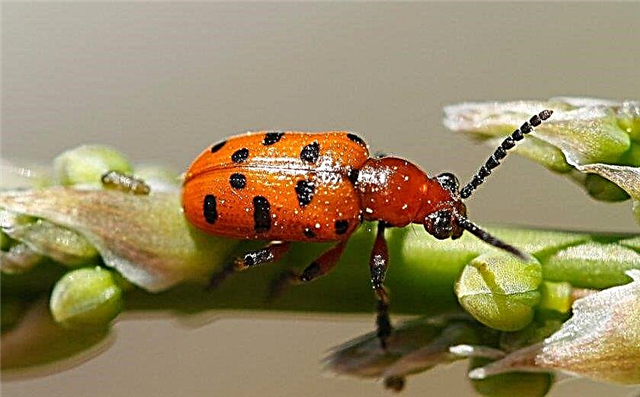
In order to prevent the emergence and spread of diseases, it is necessary to carefully monitor how asparagus grows, paying attention to the external signs of its state of health. For preventive purposes, the first treatment of the bushes is carried out in the spring, before the buds appear. The second procedure is carried out after the harvest, when all berries with seeds were removed from the bush.
For processing use:
- Bordeaux liquid;
- fungicides;
- kalbofos.
Harvesting and storage methods
Having learned about how to plant and grow asparagus in your garden or summer cottage, you need to consider when to collect ripened stems and how to store the resulting crop.
Harvesting asparagus falls on the period from the end of spring to the beginning of the summer season in the third year of cultivation. It is important to control the condition and appearance of the plant: you can start harvesting if the bush has matured and has strong stems, if they are weak, harvest is postponed until next year.
In the first crop from one plant you can get 5 shoots, in the future their number will increase to 15 pieces. Shoots with a height of 10–12 cm are cut out, going deeper by 5–8 cm with a special knife, or do it with your hands, if such a specific experience is enough. Harvesting occurs every 2-3 days for 20-25 days, in older bushes for 30-40 days. After harvesting, the plant should have 3-5 shoots, which will later develop into stronger stems with branches covered with claddings that accumulate plastic substances.Did you know? In order to maximize the harvesting period of asparagus in your area, you can plant an early variety, for example, Connoveri Colossal and late - Martha Washington.
Before sending the asparagus for storage, it is necessary to inspect all the stems for damage from diseases, rot or pests. Then the stems are folded in polyethylene and stored in the refrigerator for no more than 3 days.
For long-term storage, the ends of the stems are cut off and placed in a vacuum container; it is recommended to blanch the stems before freezing so that the product retains its benefit, appearance and taste to the maximum.
Recommendations for use
Surely many wondered whether it is possible to eat raw asparagus or whether it should be cooked, how to cook this product in order to get the maximum benefit and please yourself with excellent taste.
Asparagus can be used to prepare the main course, and can also serve as a side dish. Previously, asparagus was considered exclusively as royal food, but now it can be found on the shelves of shops with delicacies.
It can be represented by:
- fresh, must be in ice or a refrigerator;
- frozen;
- canned.

It is recommended to cook asparagus by steaming, either in a double boiler or partially immersing the stems in an upright position in a container of water, it can not be digested. It should also be said that asparagus for food can not be stored for a long time.
For a table, asparagus can be subjected to such heat treatment:
- ferry;
- cook on the grill;
- fry in a grill pan;
- cook in the oven.



